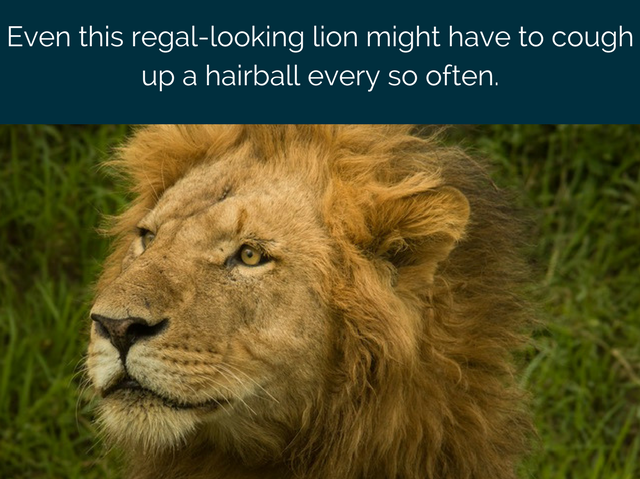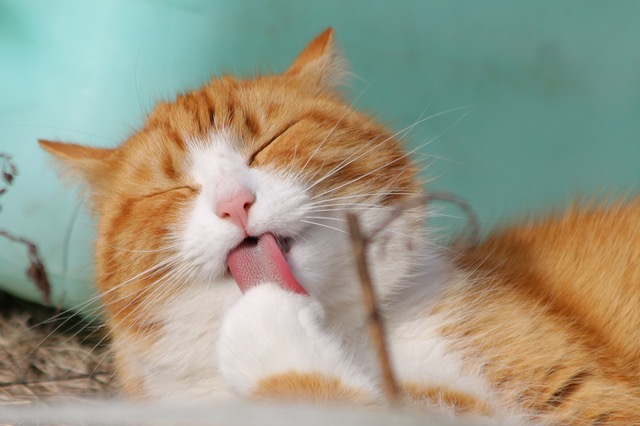Does My Cat Have Too Many Hairballs?
Last Updated on
Are hairballs normal?
In short, yes. Hairballs are a normal part of being a creature that naturally consumes large amounts of fur through grooming. In general, the occasional hairball is no cause for concern. Even wild cats like bobcats and lions occasionally hack up hairballs. Other mammals may also develop hairballs – cows and rabbits sometimes collect fur in their digestive tract. Because they don’t hack them up like cats do, the hair collects into a blockage and typically isn’t discovered until after the blockage is deadly. So next time that you notice a nasty slime-fur cylinder on the carpet, be thankful that your cat is capable of regurgitating this insoluble mass.

But how much is too much when it comes to hairballs?
Anywhere between once a week and a couple of times a year is normal. If your cat is hacking up hairballs more than once a week, it may be a sign that there is something wrong with their digestive health.
Seriously, does hacking up a hairball hurt my cat?
That’s a tough question to answer. It’s up there with “do cats really like humans?” and “why do cats purr?”
And in a way, it’s up to you to decide whether or not your cat is distressed by the process of hacking up a hairball. They may seem anxious or agitated and might meow loudly just before regurgitating the hairball – but afterward, most cats bounce back as if it never happened.
Normal hairball production is not harmful to your cat. However, your cat may suffer from a blockage if they DON’T get rid of the fur one way or another. If not excreted along with stool or in the form of a hairball, the fur will collect in an intestinal mass. This is a dangerous situation made obvious by such symptoms as constipation, lethargy, loss of appetite, diarrhea, and stomach upset.
Are they really hairballs?
Sometimes more serious issues can manifest in behaviors similar to those seen in a cat hacking up a hairball. Cats who seem to struggle with frequent hairballs might actually be dealing with something different. If your cat regularly hacks and coughs but doesn’t expel hairballs, this could be a sign of a completely different and more serious condition like asthma. If your cat vomits food on a regular basis, this, too, can look a lot like “having a hairball” but is a less normal behavior.
Again, it’s important to pay close attention to your cat and recognize when something isn’t right.
How can I reduce my cat’s hairballs?
Traditionally, hairballs are treated with lubricants like Vaseline, coconut oil, or other more formal treatments. Theoretically, these treatments help the hairballs to move smoothly through your cat’s digestive system and into the litter box. The theory is similar with food formulated to reduce hairballs – these foods have a high fiber content that encourages the hair to pass through your cat’s system. You can also use pureed pumpkin, which is also high in fiber, to help the hairballs pass through without incident.
However, when it comes to preventative care, the best approach is through diet.
That’s where we come back to the fact that cats are naturally carnivorous animals that aren’t well suited to digesting carbohydrates. Your cat’s digestive system is not well prepared to process grain-based diets. If your cat eats dry food, their diet is disrupting the natural balance of their digestive system. This biologically incorrect diet leads to reduced gut motility and more hairballs.
A healthy wet or raw diet is a far better choice for cats because it replicates what cats are naturally intended to consume. A biologically correct diet leads to improved gut function and a more balanced system. This means less hacking, less gagging, and fewer hairballs on the carpet. Feeding your cat the right food makes them happier, healthier, and it helps to prevent hairballs.
In addition to diet, another way to prevent hairballs is to brush your cat regularly. This way the fur will go into the trash instead of your cat. The less fur your cat consumes, the less of a problem that fur will create.










